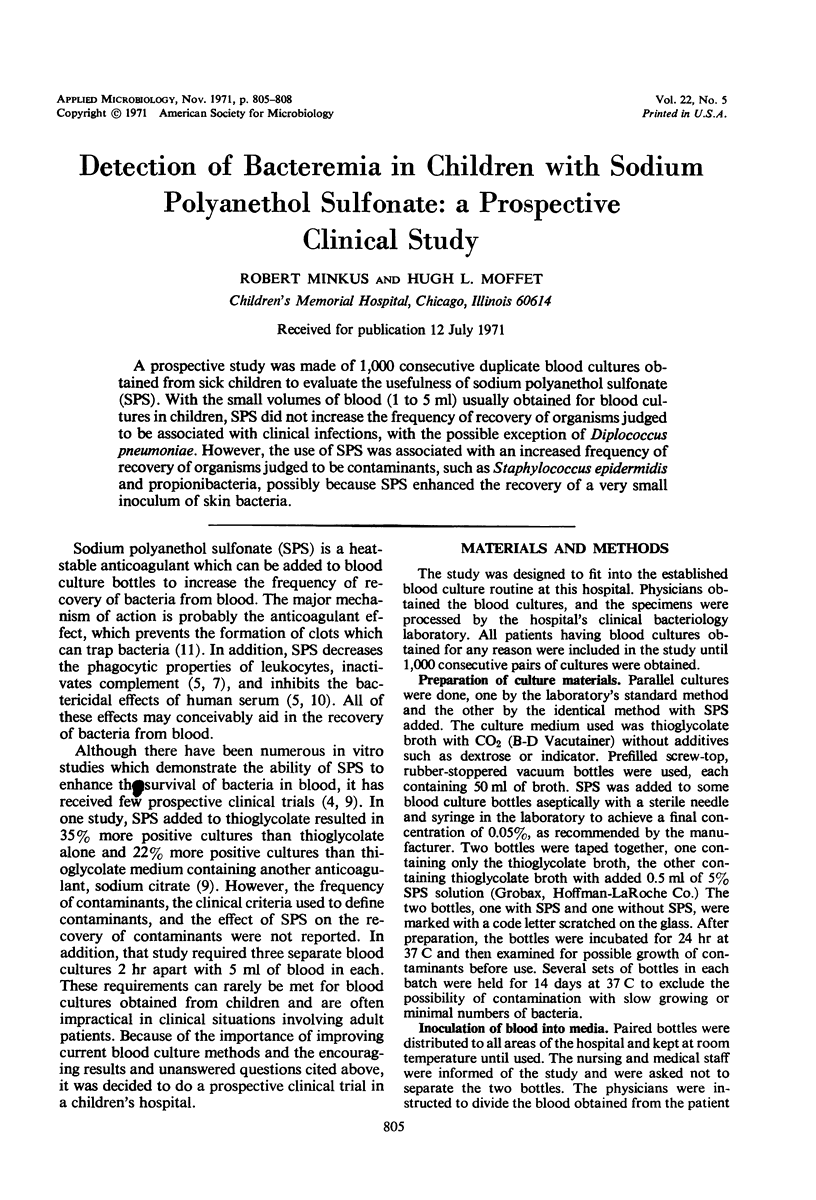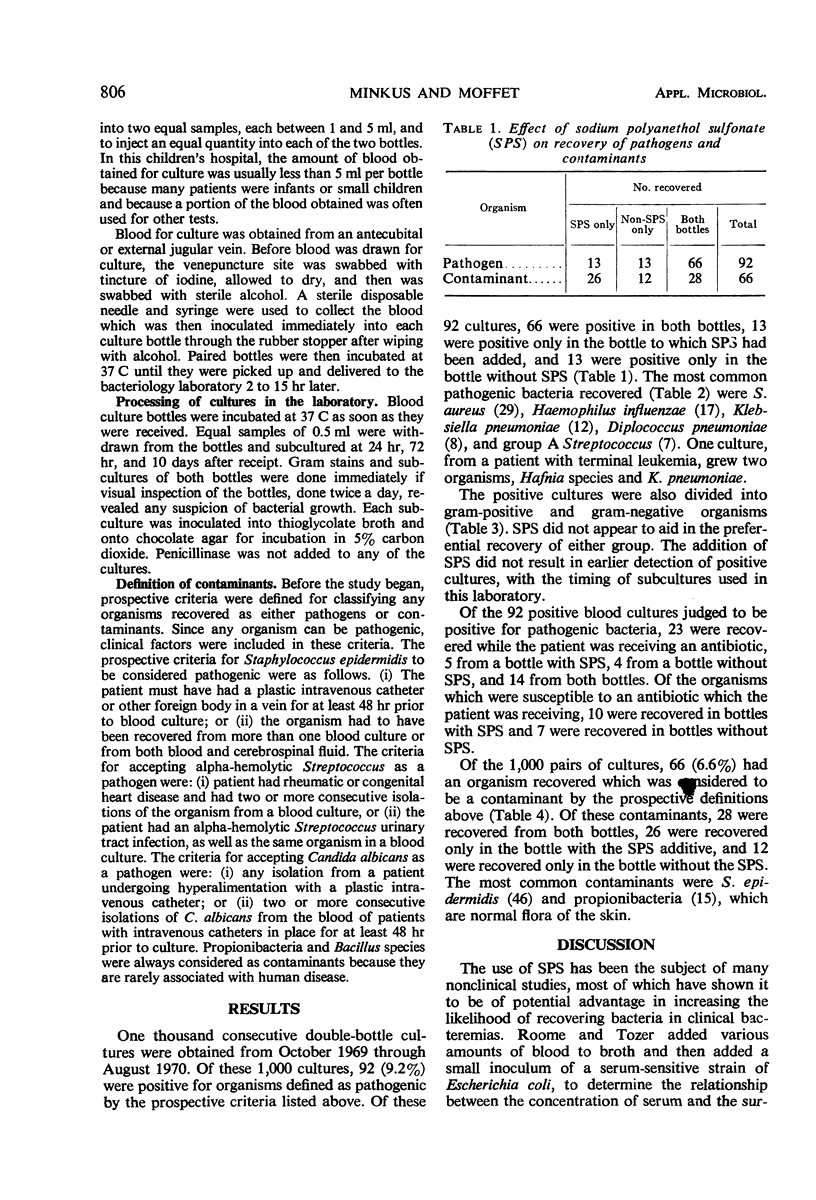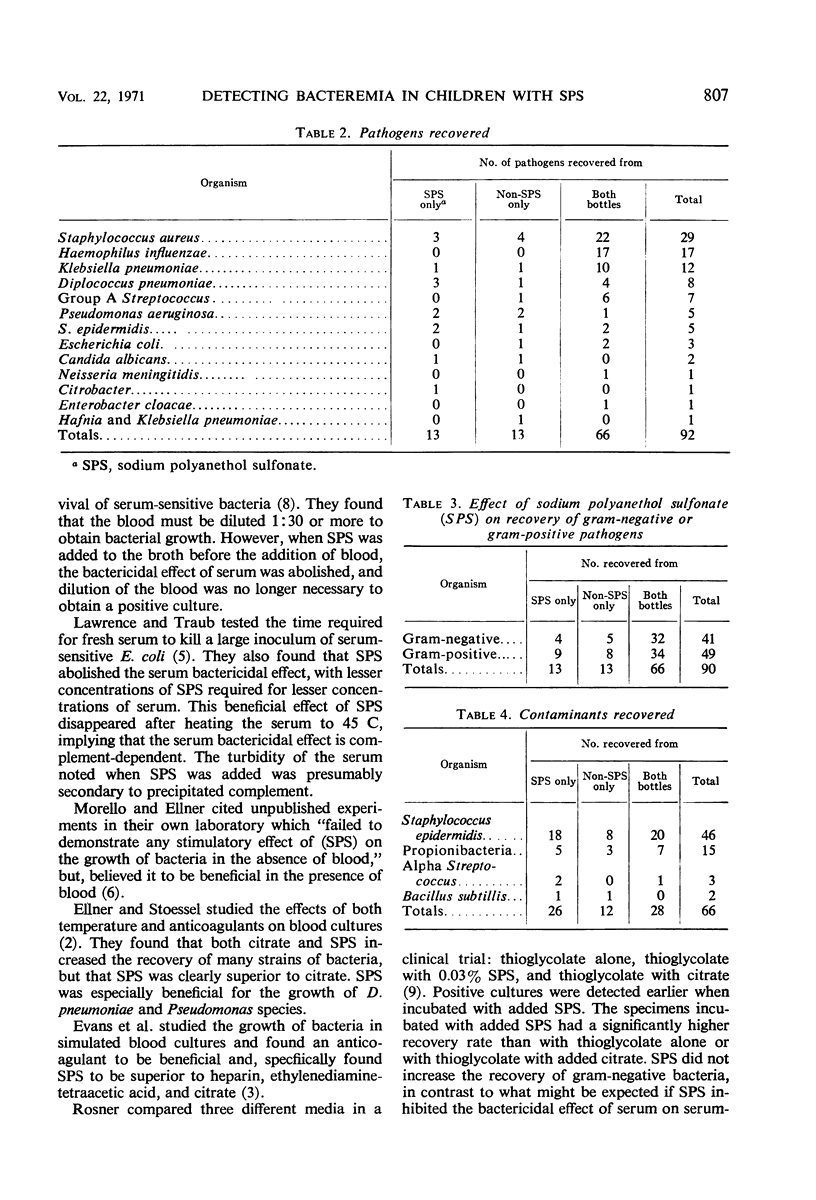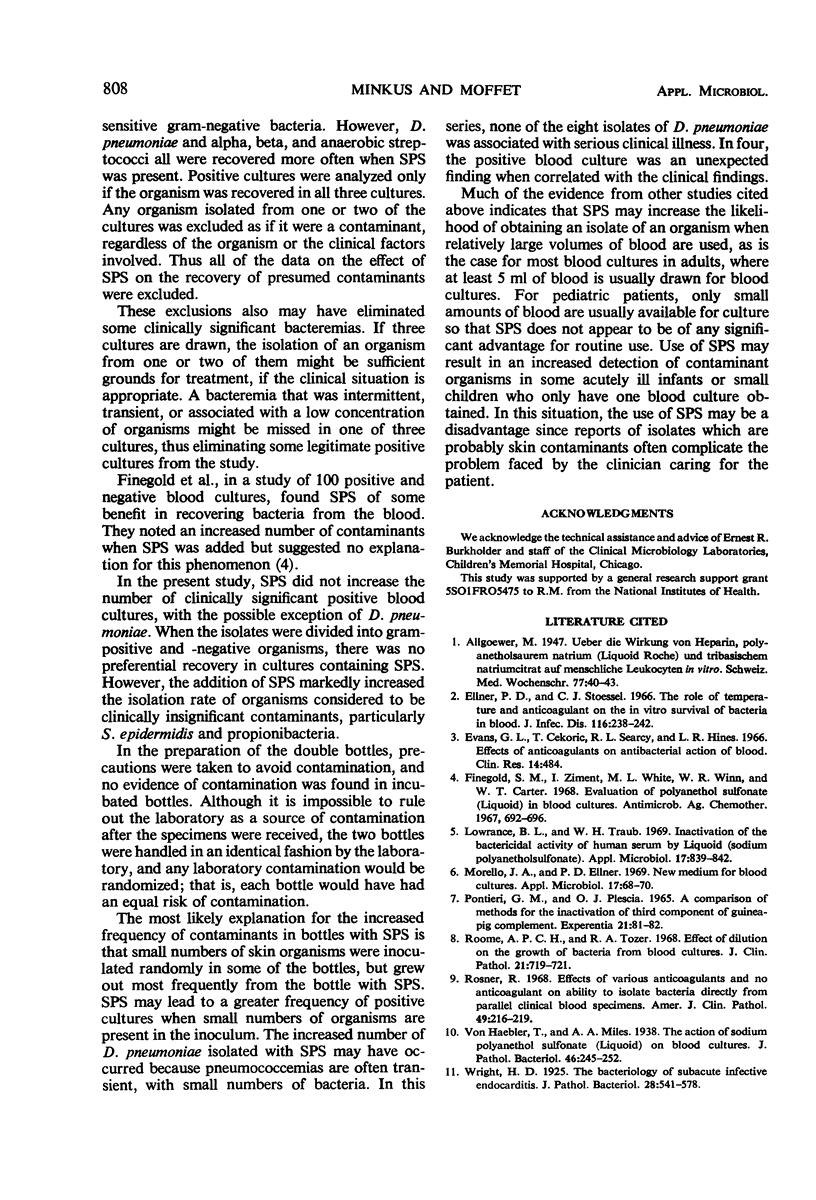Abstract
A prospective study was made of 1,000 consecutive duplicate blood cultures obtained from sick children to evaluate the usefulness of sodium polyanethol sulfonate (SPS). With the small volumes of blood (1 to 5 ml) usually obtained for blood cultures in children, SPS did not increase the frequency of recovery of organisms judged to be associated with clinical infections, with the possible exception of Diplococcus pneumoniae. However, the use of SPS was associated with an increased frequency of recovery of organisms judged to be contaminants, such as Staphylococcus epidermidis and propionibacteria, possibly because SPS enhanced the recovery of a very small inoculum of skin bacteria.
Full text
PDF



Selected References
These references are in PubMed. This may not be the complete list of references from this article.
- Ellner P. D., Stoessel C. J. The role of temperature and anticoagulant on the in vitro survival of bacterial in blood. J Infect Dis. 1966 Apr;116(2):238–242. doi: 10.1093/infdis/116.2.238. [DOI] [PubMed] [Google Scholar]
- Finegold S. M., Ziment I., White M. L., Winn W. R., Carter W. T. Evaluation of polyanethol sulfonate (liquoid) in blood cultures. Antimicrob Agents Chemother (Bethesda) 1967;7:692–696. [PubMed] [Google Scholar]
- Lowrance B. L., Traub W. H. Inactivation of the bactericidal activity of human serum by liquoid (sodium polyanetholsulfonate). Appl Microbiol. 1969 Jun;17(6):839–842. doi: 10.1128/am.17.6.839-842.1969. [DOI] [PMC free article] [PubMed] [Google Scholar]
- Morello J. A., Ellner P. D. New medium for blood cultures. Appl Microbiol. 1969 Jan;17(1):68–70. doi: 10.1128/am.17.1.68-70.1969. [DOI] [PMC free article] [PubMed] [Google Scholar]
- PONTIERI G. M., PLESCIA O. J. A COMPARISON OF METHODS FOR THE INACTIVATION OF THIRD COMPONENT OF GUINEA-PIG COMPLEMENT. Experientia. 1965 Feb 15;21:81–82. doi: 10.1007/BF02144753. [DOI] [PubMed] [Google Scholar]
- Roome A. P., Tozer R. A. Effect of dilution on the growth of bacteria from blood cultures. J Clin Pathol. 1968 Nov;21(6):719–721. doi: 10.1136/jcp.21.6.719. [DOI] [PMC free article] [PubMed] [Google Scholar]
- Rosner R. Effect of various anticoagulants and no anticoagulant on ability to isolate bacteria directly from parallel clinical blood specimens. Am J Clin Pathol. 1968 Feb;49(2):216–219. doi: 10.1093/ajcp/49.2.216. [DOI] [PubMed] [Google Scholar]


